Who wouldn’t be captivated while gazing at a night sky covered with stars and heavenly
dance of the aurora borealis?
For those seeking the ultimate escape of conscious travel with a deeper connection to nature and otherworldly experiences, Iceland offers plenty of celestial sightings perfect for those seeking to disconnect while chasing the northern lights.
Iceland’s dramatic vistas provide endless spectacular backdrops for your winter wonderland adventure. Imagine the dancing green, purple, and pink lights of the aurora borealis illuminating the snowy landscapes, glaciers, and volcanic terrains.
The lights, a naturally occurring phenomenon in the magnetic polar regions of both the northern and southern hemispheres, happen when electrically charged solar particles enter the Earth’s magnetic field. The intensity of the lights depends on the sun’s activity and the speed of the particles.
If chasing the Icelandic northern lights is on your bucket list this winter, you’re in luck! Over the past few years, there has been a distinct rise in northern light sightings due to intensified solar activity. This means you have a greater chance of catching these incredible natural lights dancing across the night sky.
For a magical experience like no other, read on!
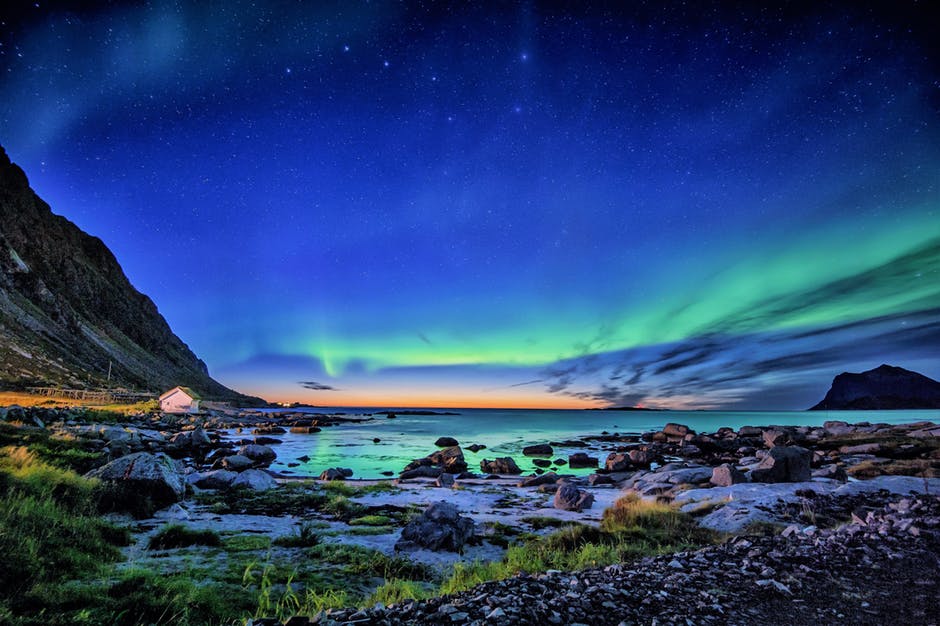
Best Time of Year to See the Northern Lights in Iceland
The best time of the year to see the northern lights in Iceland is between September and mid-April. However, the prime aurora viewing time tends to be between the darkest and longest months of November to February. Remember that the northern lights are a natural phenomenon, and sightings are not guaranteed even during the prime season.
Optimal Weather Conditions to Witness the Aurora Borealis
The optimal conditions for witnessing the northern lights in Iceland hinge on the state of the sky and the surrounding lighting.
To maximize your chances of catching this breathtaking display, consider staying in places with minimal light pollution and seek out a clear, cloud-free, new moon night when the sky is exceptionally dark, typically when temperatures drop below freezing. However, even in the capital city of Reykjavik, on a clear night, you can sometimes catch the dazzling northern lights!
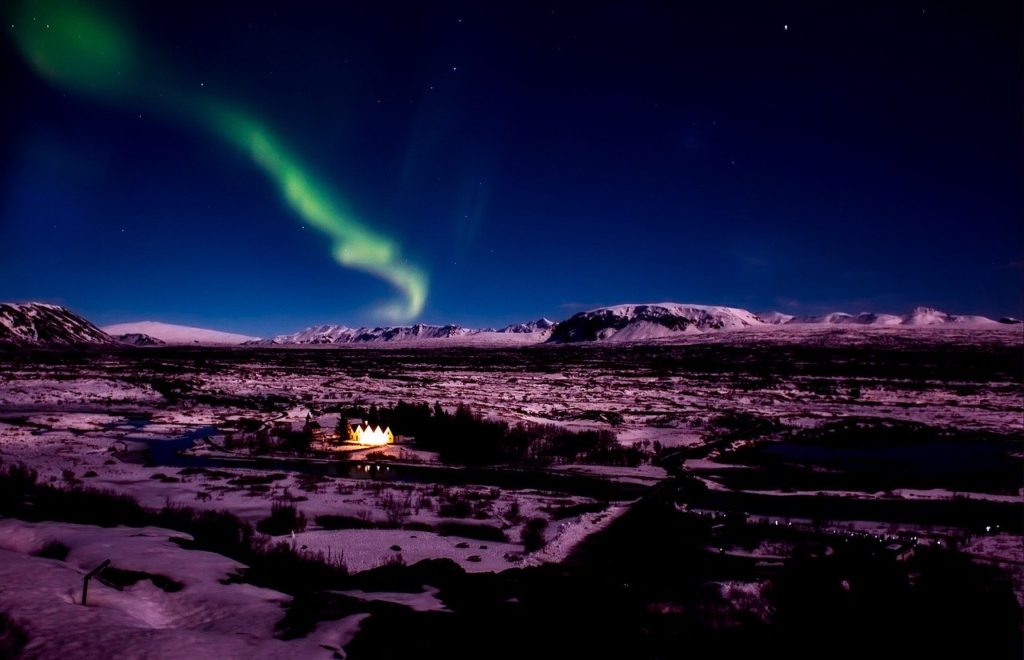
You can stay updated on the aurora forecasts and easily plan your outings by visiting the Iceland Met Office.
The 10 Most Amazing Places to See the Northern Lights in Iceland
Whether planning a self-driving winter road trip or opting for a full-service guided tour, the island provides excellent opportunities to see the aurora borealis. Consider visiting one or more of the places below for the most breathtaking views.
Hotel Rangá
For the ultimate bucket list experience, stay a night or two at Hotel Rangá, where you can become an official “Lights Chaser.” This luxurious lodge on Iceland’s South Coast is known as one of the best places in the world to see the northern lights and even offers wake-up calls for its guests when the lights are spotted in the sky.
Jokulsarlon Glacier Lagoon
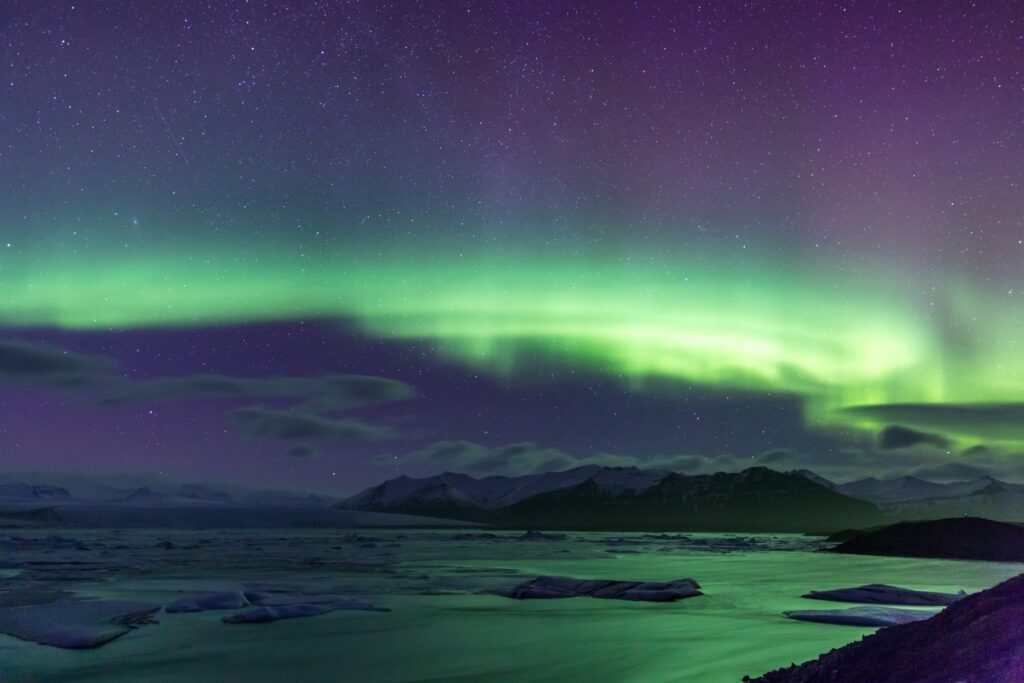
In the southeastern part of Iceland, the Jokulsarlon Glacier Lagoon is a surreal setting to witness the northern lights against the backdrop of floating icebergs. The reflection of the auroras on the calm waters adds to the magical experience.
Vatnajökull National Park
This protected area in southeastern Iceland is renowned for its pristine wilderness and is a designated Dark Sky Reserve. Featuring the Vatnajökull glacier, you’ll also find Jökulsárlón, a glacial lagoon with icebergs, numerous ice caves, and active geothermal areas that are just begging to be explored. The massive national park is also home to the famous Svartifoss and Dettifoss waterfalls. The remote location and minimal light pollution make it an ideal spot for northern lights photography.
Kirkjufell
Often called “Church Mountain,” Kirkjufell is a picturesque peak on the Snæfellsnes Peninsula in western Iceland. It’s a popular spot for capturing the northern lights with the mountain as a stunning foreground.
Myvatn
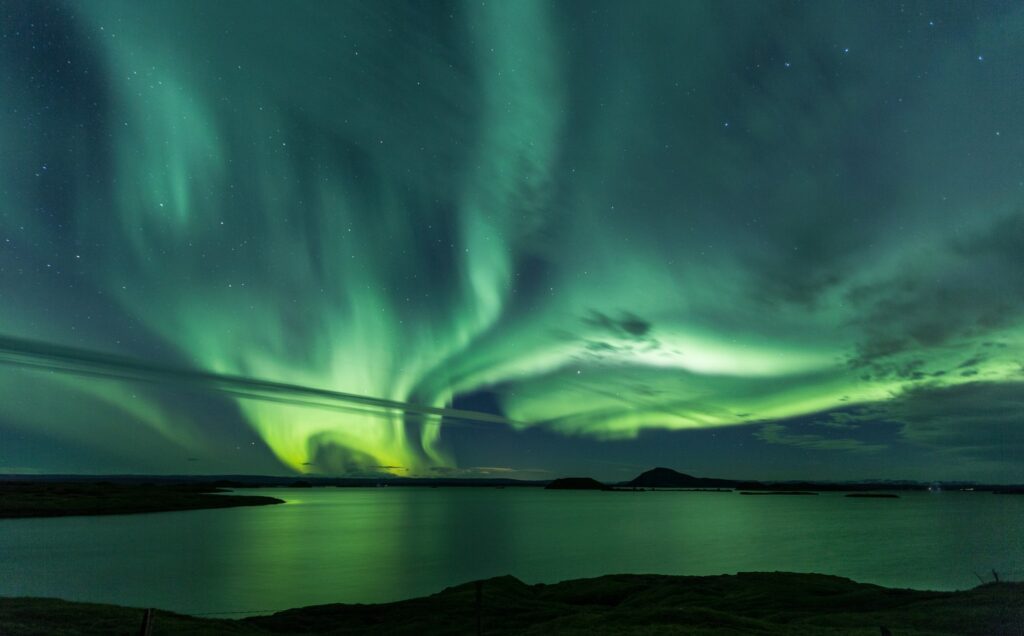
Located in northern Iceland, Myvatn is renowned for its geothermal activity and unique Icelandic landscapes. With little light pollution and minimal cloud coverage, it’s also a fantastic place to catch the northern lights, especially during the winter when the skies are clear.
Kerið Crater
This impressive 3000-year-old volcanic crater in Southern Iceland’s Golden Circle is known for its vivid, almost surreal, red volcanic rock walls. This unique geological feature was formed during a volcanic eruption. It has since been filled with crystal-clear blue-green water, providing a gorgeous backdrop when the aurora reflects on its lake.
Oskjuhlid
Situated 61 meters above sea level, Oskjuhlid is an excellent place to witness the aurora borealis, and it’s also within walking distance of downtown Reykjavik. You’ll find the famous massive dome structure Perlan in the hilltop forest area. If you visit during operating hours, don’t miss the fantastic city views from the observation deck.
Thingvellir National Park
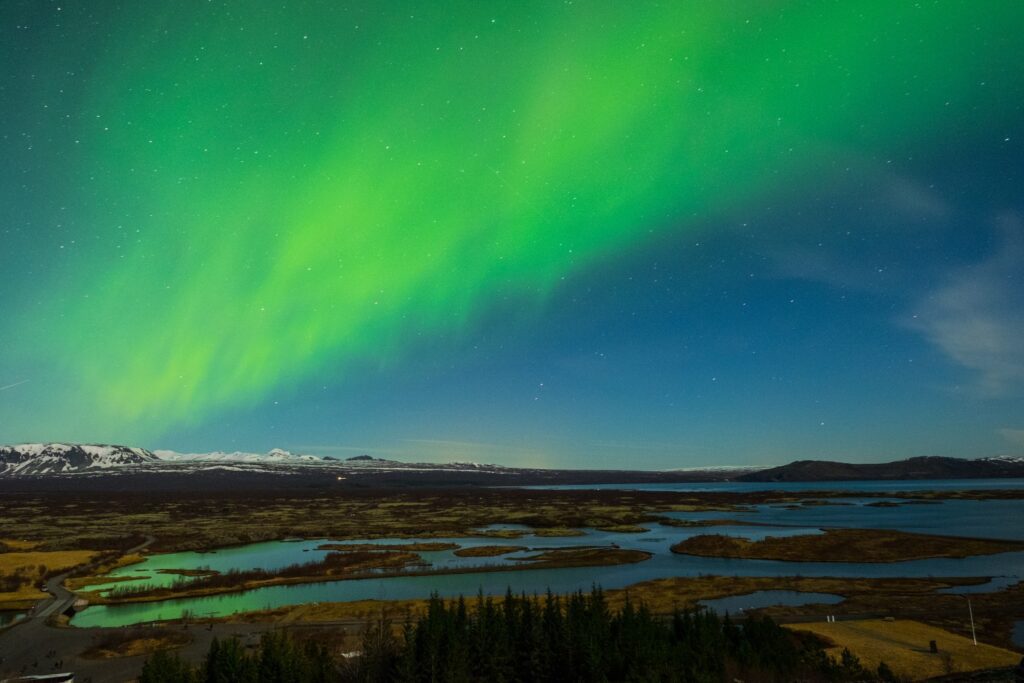
Located just a short drive from Reykjavik, Thingvellir, with its vast open spaces and clear skies, makes it an excellent and convenient option for northern lights viewing. With lava rocks, mossy landscapes, and the Silfra Fissure, this scenery makes for an enchanting aurora borealis backdrop.
If you’re considering trying a truly unique tour, consider one that includes a night at the nearby
Aurora Bubble Hotel, featuring clear domes for perfect views of the dancing northern lights.
The Secret Lagoon
The oldest natural pool in Iceland, known as Gamla Laugin to the locals, is a hot spring in the tiny village of Fludir within the Golden Circle. The Secret Lagoon, with a year-round warm water temperature of 38 40°C (100-104 Fahrenheit), makes it the perfect place to relax while watching the stunning northern lights.
Skógafoss Waterfall
Plunging 200 feet into a rugged gorge, the Skógafoss Falls are among the most famous waterfalls in Iceland. On many a bucket list, the falls are surrounded by unobstructed views and minimal light pollution, making them the perfect place to witness the alluring aurora borealis.
Before you head out, read up on What To Know Before You Go and the rest of our blogs so you’re fully prepared to make the most out of your trip to chase the northern lights of Iceland.
